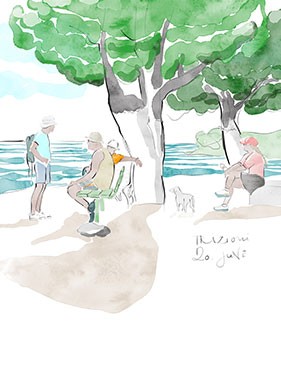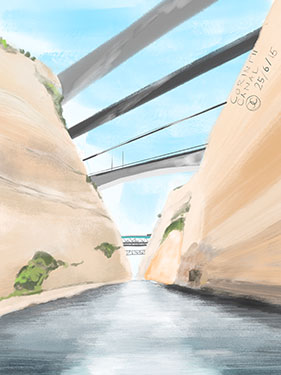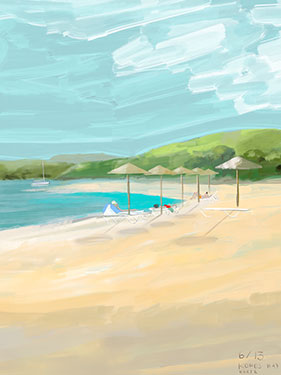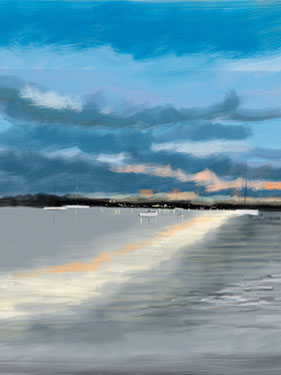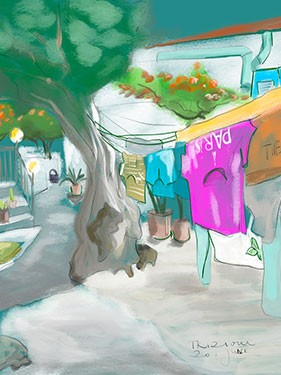Rion-Antirion Bridge – Messolonghi – Ionian Sea
Nafpaktos was our last stop on our circumnavigation of the Peloponnese. A nice little place. But when our milk turned sour from the constant swell, it was time to leave.
We wanted to leave the following morning at sunrise around 6.00 am. But then a German catamaran came and anchored so cleverly that their vessel was constantly lying over our anchor. Cuddling was completely unnecessary in an anchorage for dozens of vessels, where there were only four boats and everyone would have had plenty of room. When we pointed out that we wanted to leave early in the morning, we were greeted with a friendly shout: ‘No problem, we’re up early’. As we all know, ‘early’ is relative, so we decided to forgo another evening and anchor up straight away while the two of them were on board and could turn their ship away.
Masterpiece Rion-Antirion bridge
A fresh 20+ kn afternnoon wind pushed us briskly towards the bridge of Patras, which bears the unwieldy name Rion-Antirion Bridge or, even harder, ‘Charilaos Trikoupis’ Bridge. We were able to admire this architectural beauty from a distance of just 10 nm. Alongside the bridges over the Corinth Canal, this is the other link between the mainland and the Peloponnese. For the Rivercafe it was the first bridge cross under in its young life.
The passage is perfectly organised. 5 nm before the bridge, you have to radio Rio Traffic (VHF14) and register with the ship’s details. A friendly traffic officer then determines the part of the bridge that the vessel must take. 1 nm before arrival, radio again and ask for clearance for the passage. With the clearance comes the instruction that you should pass through the bridge with the engine running – and not sail through. A wise advice, as there was plenty of current around the bridge and the white caps built up by the wind were impressive.
The bridge, which went into operation in 2004, is up to 160 metres high and 2,880 metres long. It was built to meet the requirements of an earthquake zone and can move up to 2 metres. There have already been 7 magnitude earthquakes in the region. Given those requirements, the six-year construction period is actually quite fast. as it had to be ready for the Olympic Games 2004 in Athens. Cleverly, with a maximum clearance of 52 metres, it has exactly the same dimensions as the Corinth Canal bridges. This is also the reason why no normal cruise ships enter the Corinth Canal – they are too high.
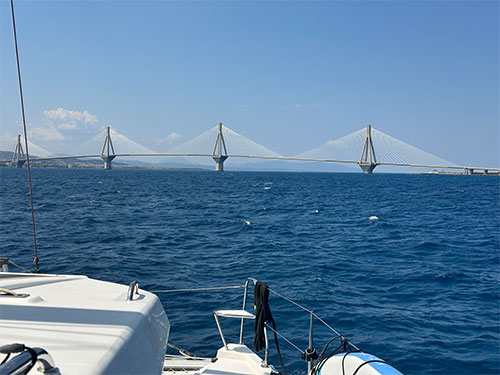
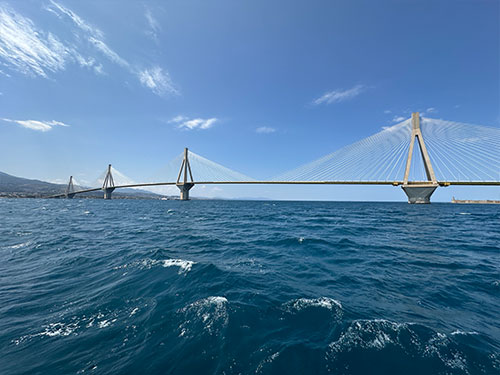
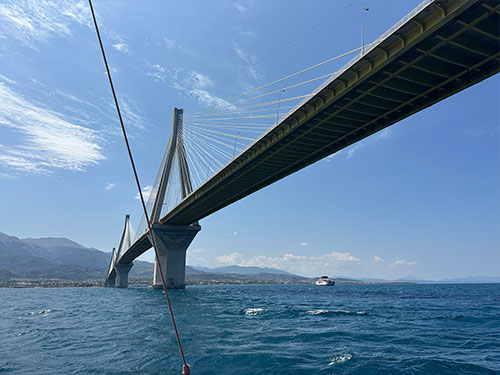
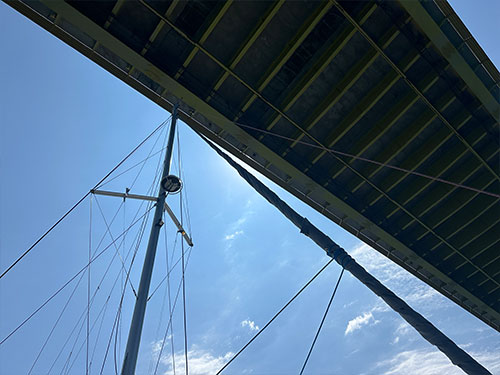
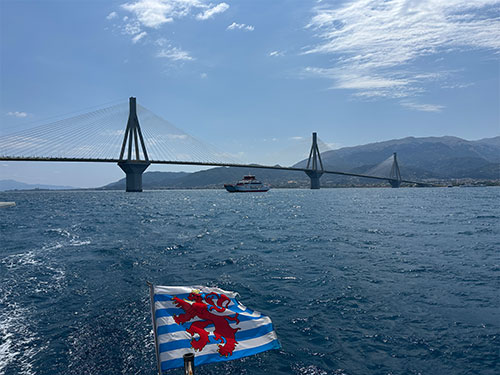
We were allocated the 43 metre bridge arch with the Rivercafe, still with 20 metres to spare. But as we approached the bridge, it looked from below as if we were going to tear the antennae off the mast, if not the whole mast. A little shot of adrenalin and all was well.
The horror stories of gusts of up to 10 Bft reported by other sailors fortunately didn’t materialise for us and we passed at 25 knots with the current against us. Just behind the bridge, ferries were travelling back and forth and I could hardly believe that Rio Control gave us right of way in front of the ferries. Sailors in front of commercial ships – we’d never seen that before.
With the bridge crossing, we had completed our circumnavigation of the Peloponnese after two months. We were back in the Ionian Sea.
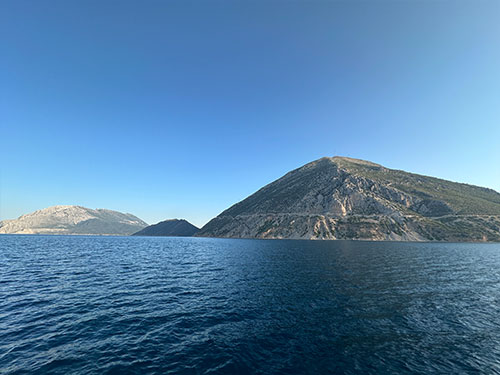
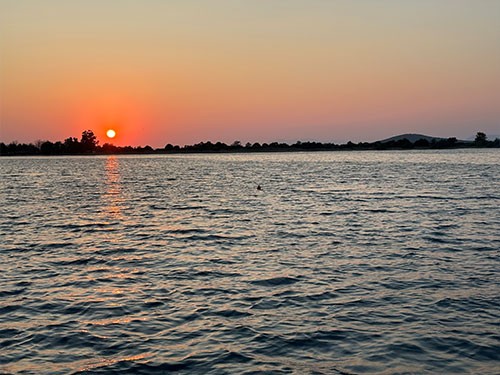
Anchorage for one night
Messolonghi
Shortly after the bridge, we dropped our anchor for the night in a secluded anchorage on the mainland. Although we had no wind protection against the 20+ kn wind, we had a pleasant wave protection and a beautiful landscape around us. The following morning, we headed for our next destination: Messolonghi. A nature reserve in a lagoon with salt pans, fishermen’s cottages, a marina and a town.
After weeks without a proper boat wash, the Rivercafe was crying out for plenty of fresh water and a scrubbing brush. Every square centimetre was salty. We spent three days in the marina and enjoyed the company of our Swedish friends Margarete and Dan, who put their boat ashore to take a break from sailing. The marina is ok, the people are nice and there is even a ship chandlery providing overpriced car rental too. There are a few restaurants all around and the small town of Messolonghi with a population of 12,000 can be reached on foot in 25 minutes. However, the town is not remarkable. You can stock up on provisions and look after your boat. The marina is very popular for wintering yachties.
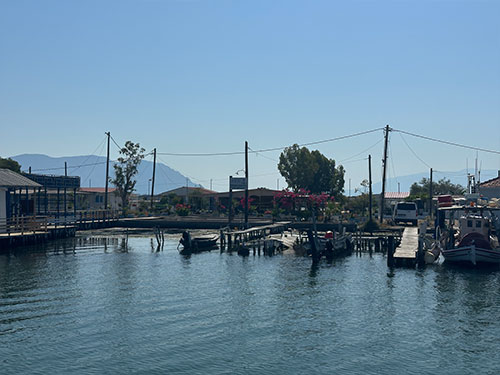
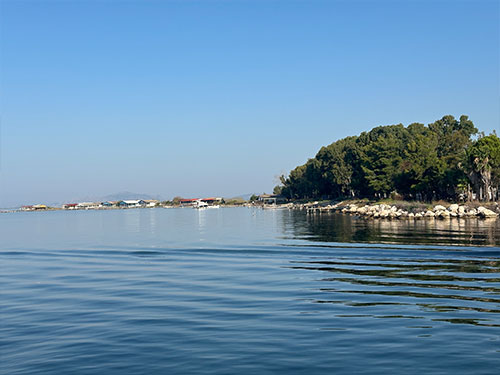
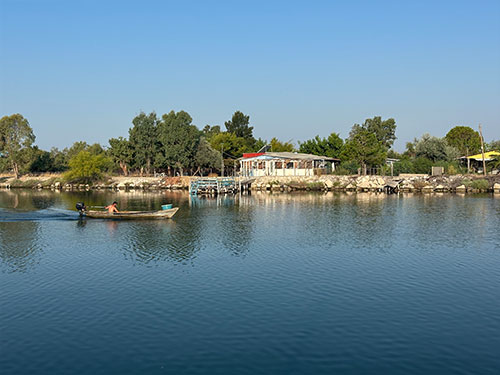
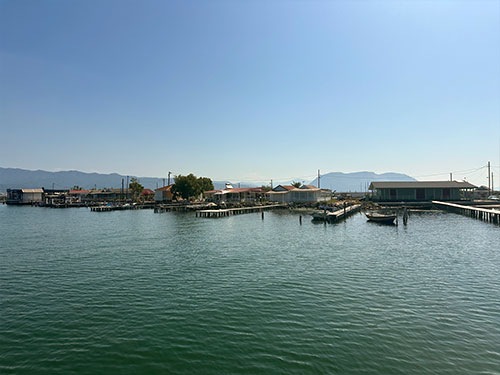
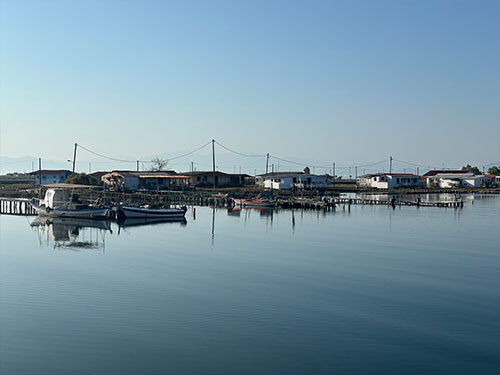
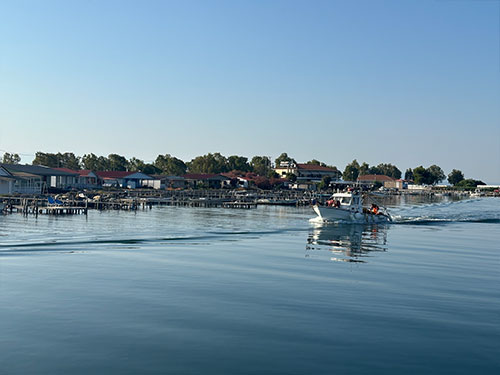
Fishing houses longside the canal and the lagoon
When we left the marina again, we were attacked by thousands of mosquitoes that seemed to want to take a holiday from lagoon life to accompany us. After a three-hour massacre, we had the Rivercafe to ourselves again (almost).
Thoughts on the Peloponnese
It was a great time and it was a very good decision to sail around the Peloponnese, especially anti-clockwise. The deep bays (or fingers) open to the west and the winds blowing through determined our pace and destinations. We had to plan flexibly and the weather forecast was no reliable help at all. Two months gave us enough time to ride out the occasional bad weather and still discover countless gems on our shore excursions.
Apart from the side of the Saronic Sea, the stretch to Hydra (Ermioni) and the island of Poros, we only found empty areas with plenty of space in May and June. The Peloponnese is not very suitable for charterers, who hardly go beyond the Saronic Sea.
In the Peloponnese, we found a different Greece and different people. We thought it was great, beautiful and sleepy. There is little tourism, most people seem to be campers, as you see plenty of motorhomes. Perhaps this is also the reason why very few Greeks here speak English or other languages, even among the young people there is a frightening lack of it. Little works without translation apps.
It is a country that has fallen out of time. Once the centre of Europe (and the world), people today seem to prefer to remember the golden past and remain in a deep sleep without any ambitions. We didn’t find the people to be as friendly and open as they usually are in Greece. If you are travelling for culinary reasons, you can safely skip the Peloponnese. I can’t remember ever having eaten more monotonously and unambitiously for a stretch of two months. It’s better to cook for yourself, since pantry staples are easy to find and there’s no need to stock up in bulk.
The Peloponnese is visited for its breathtaking landscapes and history. It is a beautiful piece of Europe. The historical sites of Olympia, Messene and Delphi (ok, that was the mainland) are impressive. Places like Kalamata (old center), Nafplio, Monemvasia and Hydra are real eye-catchers. Anchorages such as the bay of Pylos, Kagio or Elafonisis are very special. There are few sailing areas that offer so much variety in just 600 nm and with short daily distances. A sailing gem – this Peloponnese. We are very glad that we did this circumnavigation.
Art at sea
Ka has always drawn and painted a lot on our travels. She recorded our round trip around the Peloponnese in a painted diary. Here is a small extract from her work. Here you can find more
https://www.instagram.com/karinbernardybinz/:
